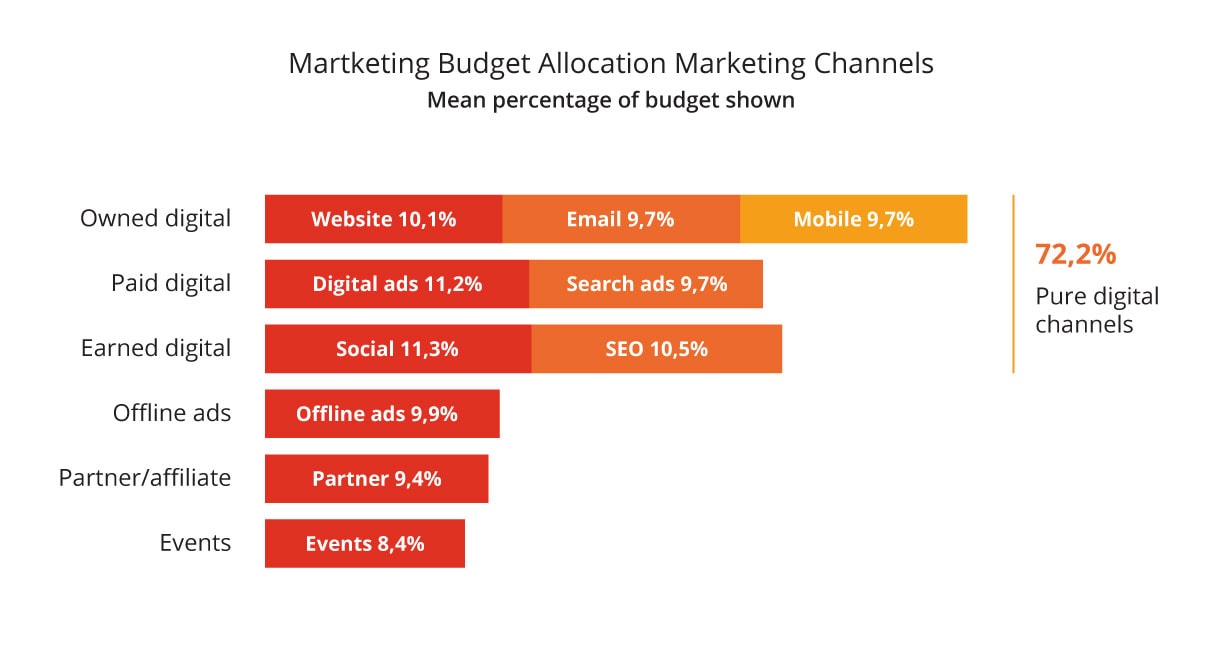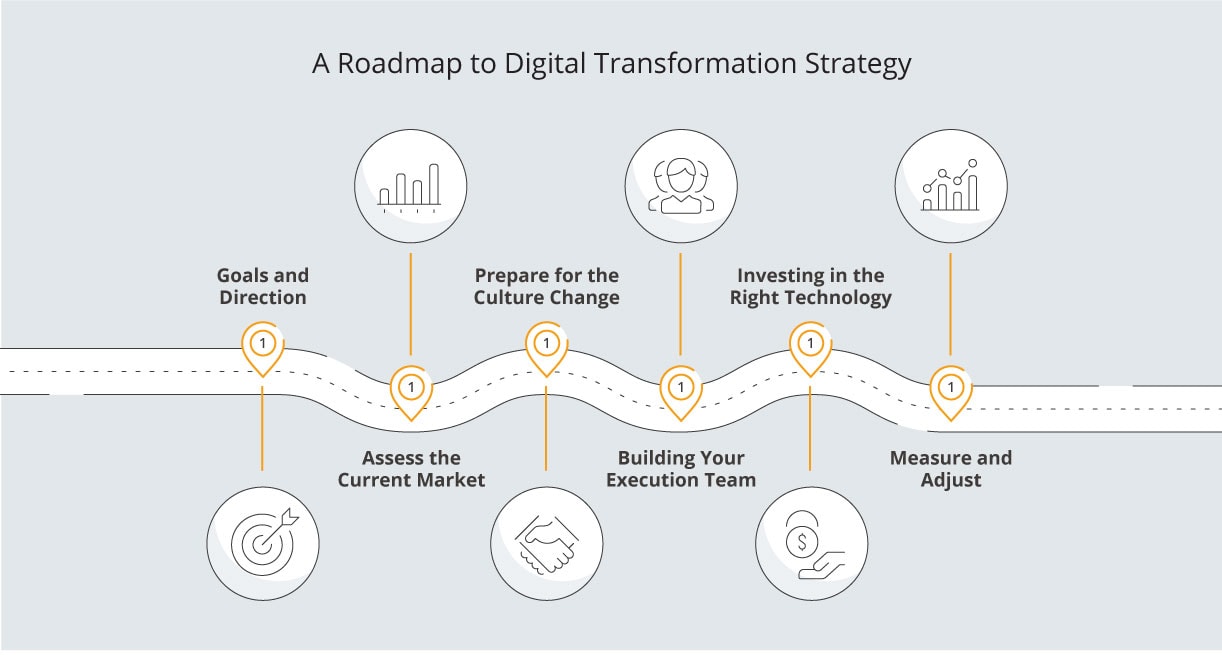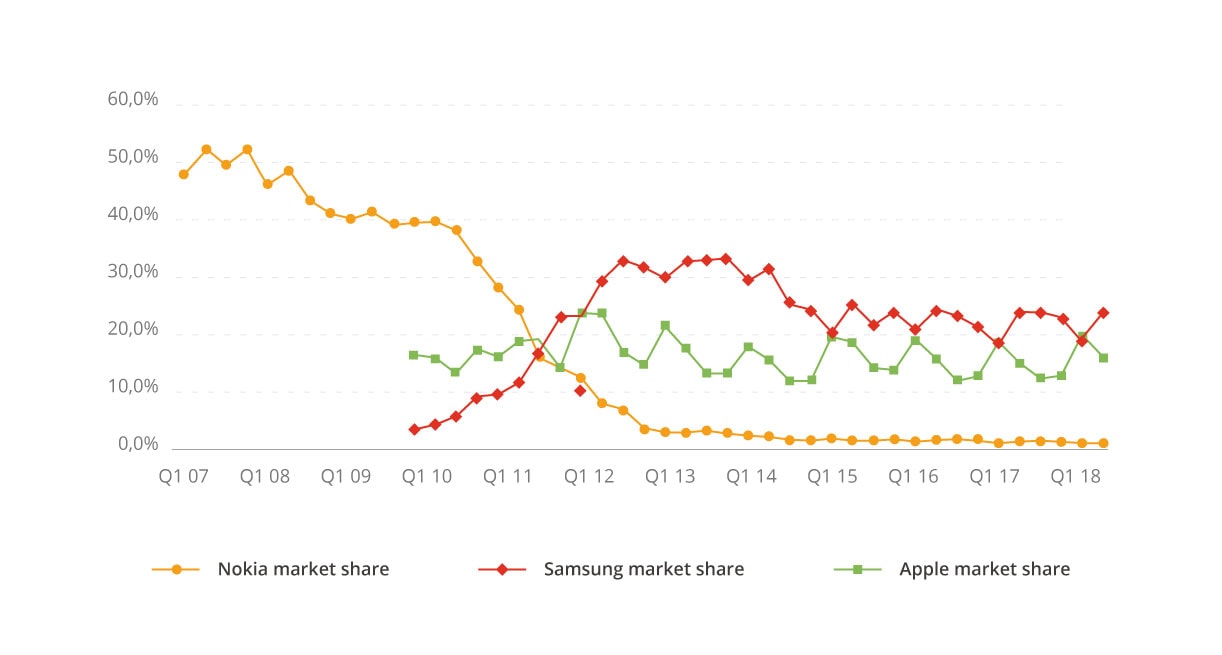
How to create an effective digital transformation strategy?
Depending on where you're from, applying for a passport is a different customer experience.
Some countries, like Poland, require submitting the required documentation in person. You can do that in one of the designated offices in the country or a consulate if you’re abroad. In the UK, on the contrary, you have two options. You can apply by post using paper forms.
But the authorities encourage people to do it online instead because it is faster and cheaper, too.
Additionally, not only can you renew, replace or update your passport on the UK government’s website – you can pay for it directly online as well. And the photo you submit can be taken with your personal device as long as it meets the stated requirements.
While it is not up to us to decide which way is better, the latter is an example of an effective digital transformation strategy, implemented by the British authorities. And if a government of a 67-million-people country can do it, so can your company, regardless of its business profile.
Digitisation, digitalisation, or digital transformation – which is it then?
There are a lot of buzzwords tossed around in the IT world these days. Everything’s digital, virtual and interactive. But what does that practically mean for your business?
To answer that question, we need to start with the basics. It’s essential to understand the difference between the “analog” and “digital” ways of doing things.
Let’s look at a recruitment example. During onboarding, do you ask newcomers to sign a paper form stating they’ve completed security training? If so, that sheet is analog. Do you then scan that physical document and convert it into a PDF format to keep it on file online? That’s digitising it.
The next step would be to digitalise that procedure entirely. For instance, you could allow your employees to use e-signature on your intranet to confirm they’ve completed all necessary training.
In our recruitment example, it might mean fully streamlining the training cycle. You could enable your employees to conduct the whole process online: from getting a reminder that a course is due, to completing it on the intranet within a certain timeframe, and being virtually signed off by a superior after finishing.
There are other reasons why doing things the analog way is no longer feasible or recommended.
If vinyl is making a comeback, why is analog data no longer “in”?
Yes, the music industry might be experiencing “The Return of The Vinyl”. But the rest of the world is generally moving away from analog records.
Firstly, because storing them is not very practical. They are too vulnerable to natural disasters, like fires, floods, and armed conflicts.
Physical copies are also quite bulky. Piling up boxes of documents is a very bad idea since we are already running out of the living space in some corners of the world.
Analog records are, unfortunately, prone to being stolen or altered as well. That includes money, for instance. If someone breaks into your online banking account, you can report suspicious transactions to your financial institution immediately. You might even claim funds back if they are withdrawn without your authorization. But have you ever received stolen notes back?
From the environmental point of view, cutting down trees to produce more paper is not a viable way to save the planet, either. Sure, there are other ways of making it, but cellulose is still the most widespread.
Finally, there is an aspect of the “digital vs analog” discussion that will make going through the digital transformation worthwhile for any organization in the 21st century. It involves promoting your business.
What does internet marketing have to do with it?
Google algorithm is a merciless thing. If you don’t position your content right, no matter how UX-friendly your page is or how much you’ve paid for the new logo, nobody will even know that your product or service exists.
The internet and social media have completely changed the marketing game. According to statistics, digital ads have become an overwhelming part of any company’s budget allocation recently. The pandemic has also proven where the consumer demand lives currently.
You can’t promote your business online if it doesn’t exist in the virtual space – that’s a fact. Maybe you don’t necessarily have to advertise on TikTok right away if your target group is single mothers aged 30-40. But following online trends, if done right, has never killed any brand.
Slack, a messaging platform for the modern workplace, has been effectively using the digital marketing space to its advantage, turning to unconventional channels to boost its image. The American company is known for its app updates that, sometimes, have nothing to do with an actual bug fix. They want to improve their app, upgrade it and make it even more user friendly.
Transformation can lead to a change in the business model and the introduction of “Disruptive Innovation”. Sometimes such products turn the entire industry upside down. Examples are AirBnb and Uber.
Digital transformation is a long and winding road… Not really!
If you’ve read thus far, you can already tick off the first step in the process. That means you’re curious and possibly wondering whether you need a (new) digital transformation plan for your organization.
At this stage, you’d probably also want to know what it takes to go through it. While there are no fixed steps in this journey, a few milestones can be defined to ensure that you’re on the right track.
Start by analyzing where you are now, where you want to be and how you can get there.
This part means a thorough review of your current resources and, to a certain extent, business values as well. Sometimes, it’s also referred to as “pillars of digital transformation”.
Here are some questions that might help you assess the situation correctly:
- Does your company culture easily embrace change?
- Are your people, both employees and management, onboard with it?
- How will your clients, employees and business partners benefit from the new digital experience?
- Are you prepared for innovation?
Some other aspects you should keep in mind are:
- who or what you might need to help you succeed,
- whether you have access to the technology that will help you transform,
- how much it will cost,
- how long it will take,
- and to what extent it will impact operations in the transitional period.
This analysis is probably the hardest step. It requires a full commitment from everyone involved in your organization and an honest, 360-degree evaluation of your company’s transformational readiness on many fronts.
Don’t do “the Nokia”
Remember this telecommunications company, the Finnish national pride? Only 15 years ago, it was the biggest mobile phone manufacturer in the world. It was famous not only for its devices but also for the cult “Snake” game that every Nokia user, kid or adult, was obsessed with.
And then, the organizations’ execs completely slept through the digital revolution in the IT and electronics industries. They simply didn’t assess the need for transformation right when it was banging on their door. We all know how that ended for them.
So where’s Nokia now?
It’s slowly bouncing back from the depths of technological oblivion through a series of ventures into virtual reality and digital health, among other things. But, despite its undisputable potential, it will probably never really stand a chance against Apple or Samsung in the future anymore.
Nokia’s case is a prime example of how things can spiral down in no time when you stick to Legacy Culture and don’t invest your time and effort in facing the technological challenges of your times.
You just need to keep a few things in mind.
Get ready for the digital transformation “lessons learned” early
Nobody gets it right the first time around. But before you start your digital transformation it’s good to measure your company’s potential in this aspect with Digital Maturity Assessment.
As in any other transformational period, you have to accept in advance that mistakes will be made along the way. Because not every aspect of the digital future can be anticipated today.
Since any transformation is a process, it doesn’t stop once you’ve reached your initial objective.
The digital world is very dynamic, and you need to keep up with changes and innovations. Bugs will need to be fixed constantly to avoid jeopardizing data security. And upgrades will have to be done regularly to ensure that your clients get the best out of your products or services.
And last but not least, the most important factor in running a digital transformation of a company is the people’s attitude towards it. Most projects fail because employees/ users are not ready or not eager to make changes and adjust to them.
Once you’ve done your digital transformation preparations well, it’s downhill from there, however.
Conclusion
It’s happening all around us already.
It poses a lot of challenges in itself indeed. But the digital realm is much more effective when it comes to storing, managing, and distributing the overwhelming amount of information exchanged in the world today.
Some companies, like ours, specialise in guiding you through that process. They might see things from a more objective perspective. As a result, they’ll be able to provide a realistic proposal of a digital transformation plan tailored to your business needs and actual technological capabilities.
The UK government surely hired experts to help it get it right. After all, who would have thought twenty years ago that applying for a document containing critical, personal information would be enabled safely on the internet without speaking to any government official.









